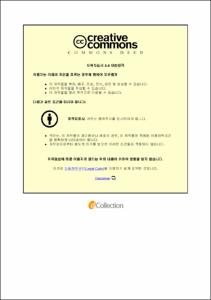광범위한 만성 췌장염을 동반한 그루브 췌장염과 동반하지 않은 그루브 췌장염의 비교
- Abstract
- Background and Aims
Groove pancreatitis (GP) refers to a type of chronic pancreatitis (CP) that primarily affects the groove area of the pancreas while the rest of the organ remains largely intact. However, it is often observed that GP is suspected to be involved in the pancreas body and tail. And according to the study published in 2014, complete clinical success was achieved in 70.7% patients without surgical treatment. Therefore, we retrospectively analyzed and compared the patients who had pancreatitis in the groove area (GP) and the patients who had pancreatitis in the pancreas body and tail as well as mainly involved in the groove area (GP with CP).
Methods
We investigated patients who referred to GP, paraduodenal pancreatitis, cystic dystrophy of heterotopic pancreas on imaging or pathologic examination at Asan Medical Center in Seoul between January 1, 2000 and May 31, 2017. We investigated how many of 44 GP progressed to GP with CP and whether they had previously been diagnosed with GP among 15 GP with CP.
Results
A total of 59 patients were identified during the study period, including 44 GP and 15 GP with CP. Baseline characteristics of both groups were not statistically significant except for age, and GP patients were younger than GP with CP. Although not statistically significant, the proportion of alcohol intake and diabetic patients was also lower than GP with CP. Multidetector computed tomography (MDCT) findings showed statistically significant difference in calcifications (GP=29.5%, GP with CP=66.7%, P=0.015) and main pancreatic duct size (GP=2.2mm, GP with CP=4.5mm, P=0.020). 7 of 44 (15.9%) GP progressed to GP with CP. 5 of 15 GP with CP were initially diagnosed at Asan Medical Center and 3 of 10 (30%) were progressed from GP. 29 patients (65.9%) had less than 2 points in Modified CTSI (CT severity index) and only 1 patient (2.3%) had more than 8 points in GP. Conservative treatment was performed in 34 GP patients (77.3%) and endoscopic treatment was performed in 7 GP patients (15.9%), whereas surgical treatment was performed in 3 GP patients (6.8%).
Conclusions
GP patients were younger than GP with CP. Calcifications and main pancreatic duct sizes on MDCT were less in GP. 7 of 44 GP progressed to GP with CP. This suggests that some GP is not confined to the groove area but can proceed from the groove area to the pancreatic body and tail. Most patients improved with conservative treatment and endoscopic treatment. Only 6.8% of patients underwent surgery.
- Issued Date
- 2018
- Awarded Date
- 2019-02
- Type
- Dissertation
- Alternative Author(s)
- Jae Hyuck Jun
- Affiliation
- 울산대학교
- Department
- 일반대학원 의학과의학전공
- Advisor
- 이성구
- Degree
- Master
- Publisher
- 울산대학교 일반대학원 의학과의학전공
- Language
- eng
- Rights
- 울산대학교 논문은 저작권에 의해 보호받습니다.
- Appears in Collections:
- Medicine > 1. Theses (Master)
- 파일 목록
-
-
Download
 200000172059.pdf
기타 데이터 / 495.3 kB / Adobe PDF
200000172059.pdf
기타 데이터 / 495.3 kB / Adobe PDF
-
Items in Repository are protected by copyright, with all rights reserved, unless otherwise indicated.